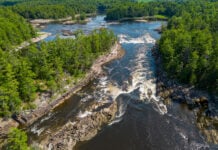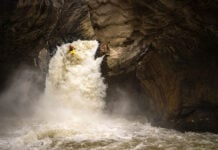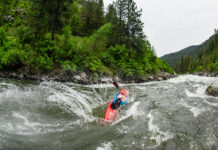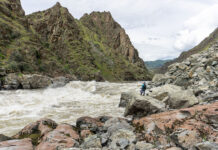There have been few occasions where a rapid’s horizon line was so pronounced it made my stomach drop. Itunda Rapid on the White Nile always caused that feeling. I often found myself running into the bush to relieve myself while scouting, and it wasn’t because I had eaten something funky. Catching the eddy just upstream of Slide on the Salmon River, I had the same feeling.
Descending the Salmon River at never-before-paddled flows
It was day 34 of a 78-day Salmon River source to sea expedition. Our crew was paddling more than 1,000 miles, from the headwaters of the Middle and Main Forks of the Salmon in Central Idaho, all the way to the Pacific Ocean. We were doing this three-month sufferfest as a conservation project to promote the removal of the four lower Snake River dams and a moratorium on the Stibnite Gold Project and save Idaho’s rapidly dwindling salmon populations from extinction. We had just arrived at the crux of the whitewater portion of the expedition.
The Lower Salmon isn’t normally run above 20,000cfs because one rapid—Slide—is unrunnable at high water. When we reached the put-in for the Lower Salmon, the river was flowing at 60,000cfs.

We called other paddlers and asked for beta. One source told us Slide is portageable, but dangerous. Another source told us not to put on at all.
We assessed our skills, fitness and experience. Our team of three—Hailey Thompson, Elizabeth Tobey and me—put on the Lower Salmon the follow day.
Sizing up the Slide Rapid
I was anxious paddling the rapids upstream of Slide. I couldn’t help imagining a worst-case scenario where we missed the portage and were forced to run this unrunnable rapid.
Paddling into the eddy just above Slide, I realized how irrational my fear was. We could hear the rumble of the whitewater from over a mile away. The horizon line looked like the water was falling off the edge of the Earth. You couldn’t miss it.
Scouting the rapid was a new experience. Usually, when deciding whether to run a rapid or portage, you choose between a scary option and a not-scary option. Unfortunately, we only had scary options. It was clear we were going to portage, but that didn’t make the ordeal any less consequential.
We spent four hours shuttling multiple loads of drybags and kayaks over a 200-meter-long unstable talus field. We utilized technical climbing movements to get up and over boulders taller than we could reach, vertically hauling our boats with ropes and carabiners. Multiple times I placed my foot on a boulder, felt it shift under my weight, and barely caught myself from tumbling down onto the jagged rocks—or worse, into the class V+ rapid below.
Grand Salmon crew surprise even themselves
Downstream of the portage, there was no feeling of relief. The only option for reentry into the river was a 10-foot seal launch into an eddy surging up and down 10 feet, pushing straight into an undercut cliff, with wood blocking the preferred path to safety.
We didn’t see a single soul in the three days we spent on the Lower Salmon. At the confluence with the Snake River, we encountered a rafting crew who had come through Hells Canyon on the Snake.
“We couldn’t believe it when we saw you all paddling out of the Lower Salmon at these flows!” exclaimed one of the rafters. Honestly, neither could we.
The Grand Salmon Source to Sea crew is making a film about their 1,000-mile journey that followed the migration of the salmon from the rivers of Central Idaho to the Pacific Ocean.
Hailey Thompson scouting Slide Rapid on the Lower Salmon at around 43,000cfs. | Feature photo: Libby Tobey



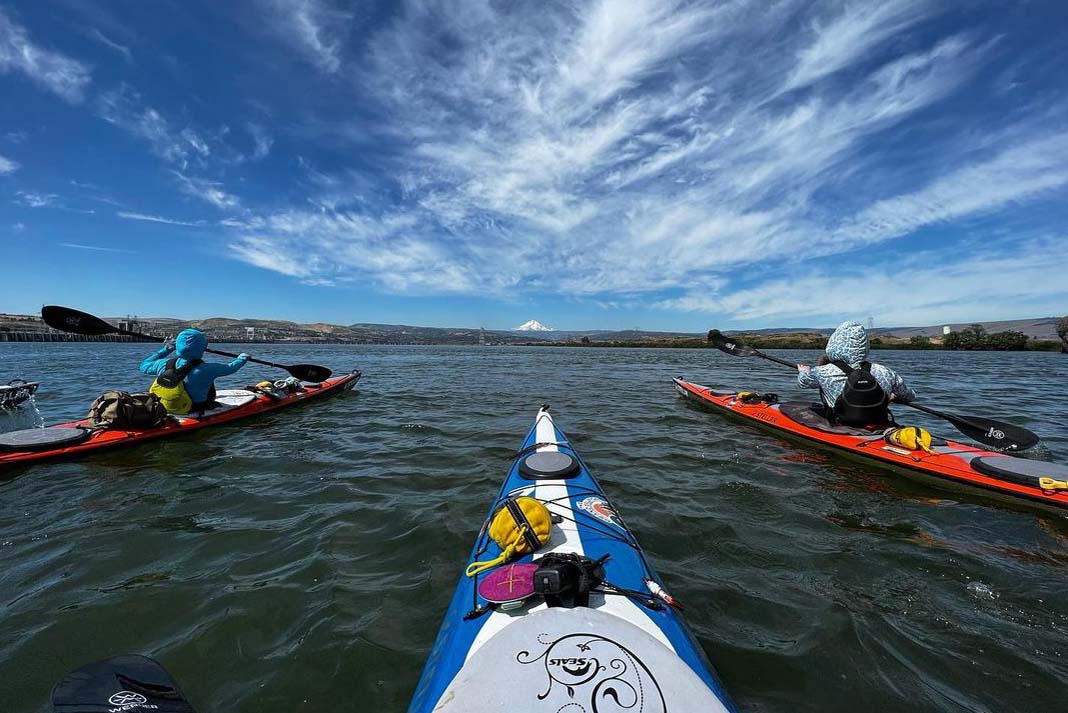
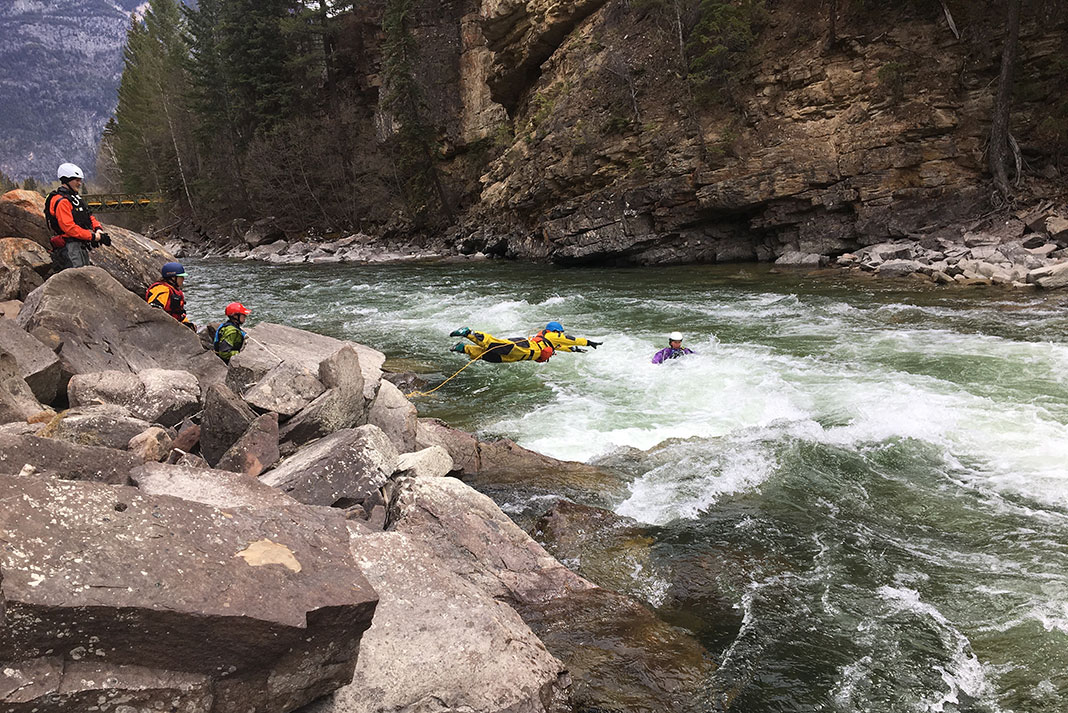
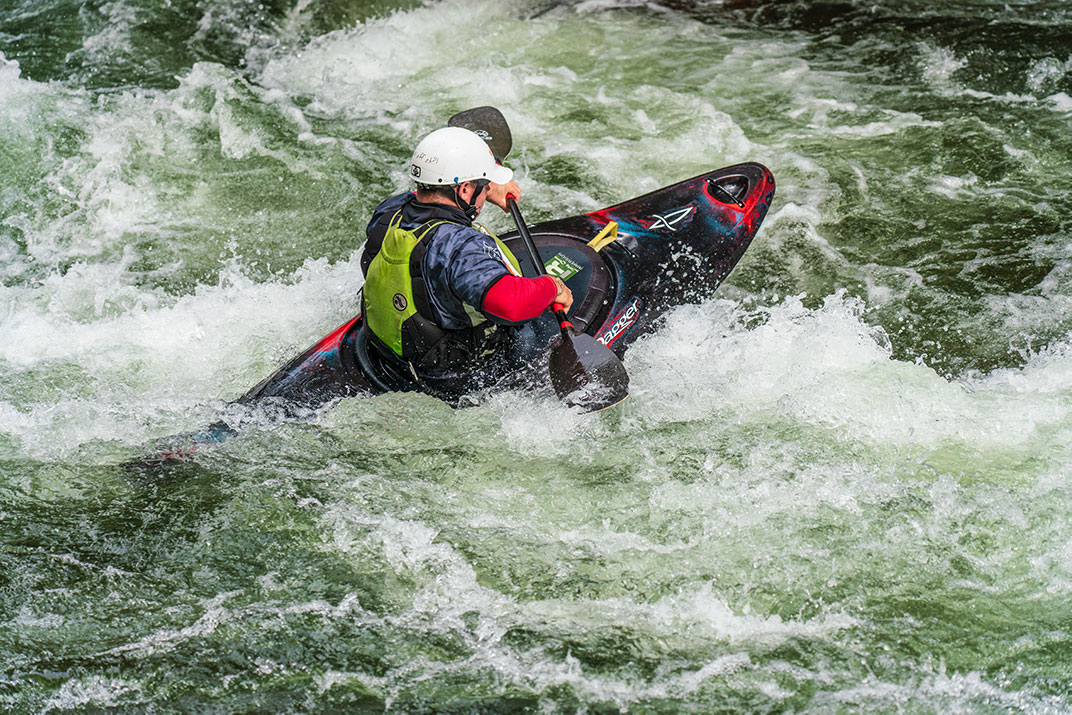
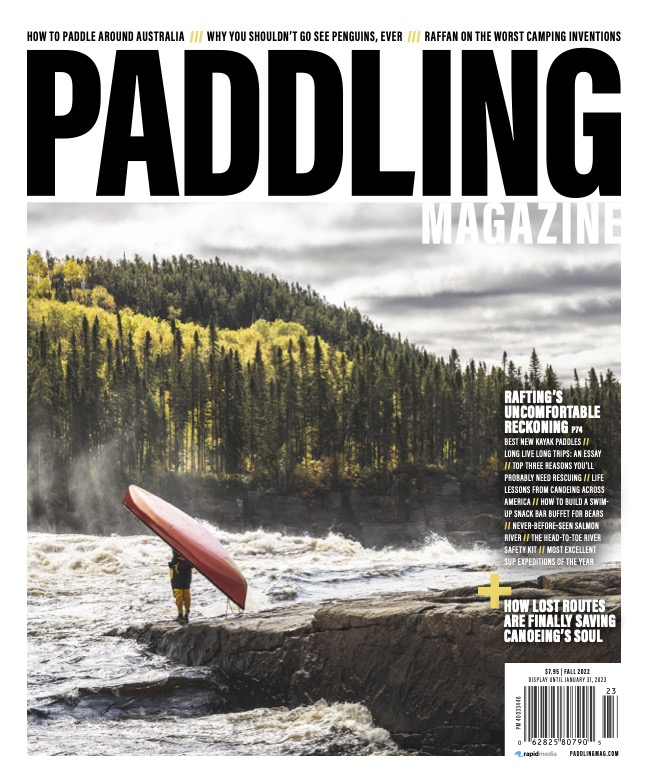 This article was first published in the Fall 2022 issue of Paddling Magazine.
This article was first published in the Fall 2022 issue of Paddling Magazine. 